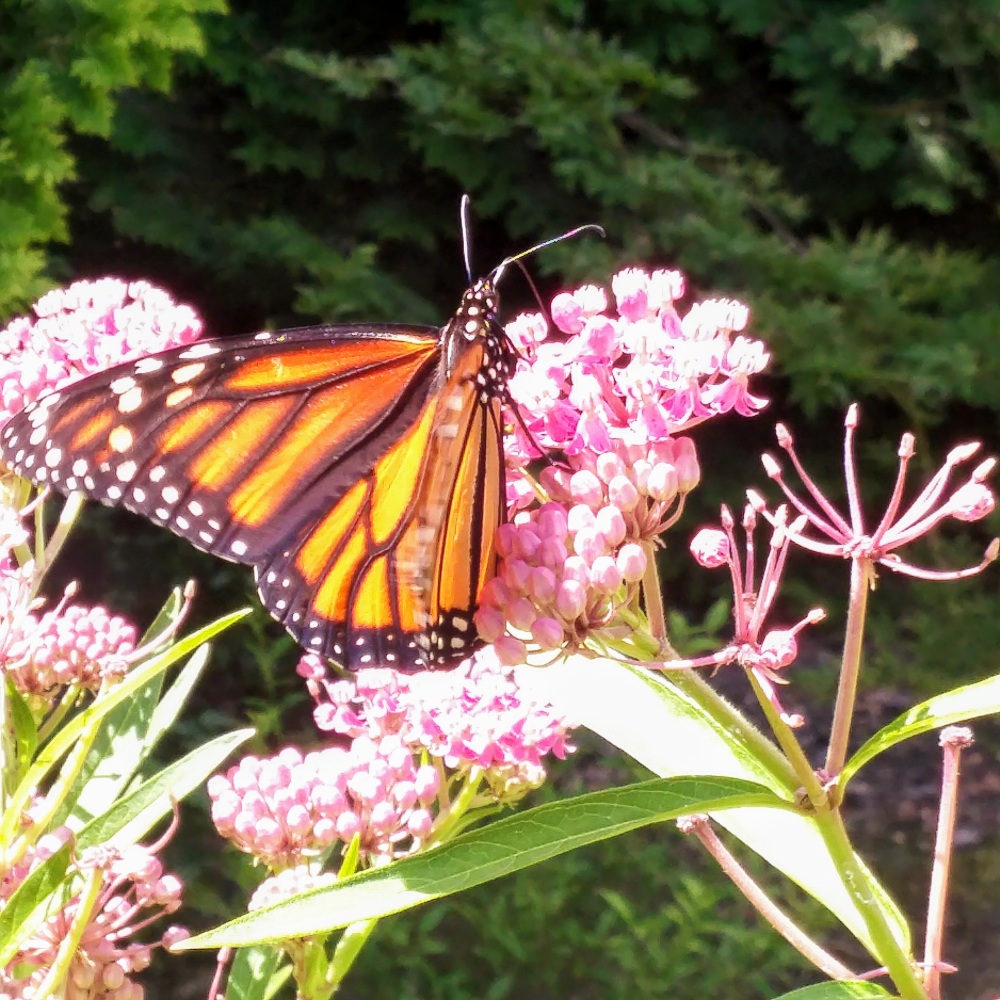With repeated failures, I’ve given up trying to grow butterfly bushes (Buddleia, below), despite concern at one time that these might be overly vigorous. There is also a problem with invasiveness of seedlings that I’ve witnessed, though not in this garden where a once very healthy shrub perished quickly when the surrounding soil turned damp from a rejuvenated natural spring after a decade when it was mostly dry

Subsequent attempts to grow other butterfly bushes failed (in drier ground), I suspect due to winter cold and dampness with new introductions that flowered beautifully but were even less tolerant, and now I must look elsewhere for butterfly friendly shrubs. Certainly, there is no shortage of shrubs and perennials already in the garden that attract the abundant local population of Tiger swallowtails. If there were none other than the several variations of Joe Pye weed (Eutrochium purpureum, below), no more would be required, but of course swallowtails do not seem particularly discriminating.

I find it interesting that swallowtails mostly avoid the long flowering mountain mint (Pycnanthemum muticum, below) that has spread over a significant area in this same damp ground once occupied by the butterfly bush. Every bee and wasp from a three county area can be found on this patch on a sunny August afternoon, and perhaps swallowtails prefer less competition, though plenty of small moths can be seen feasting on the disk like flowers of the mountain mint.

With the quantity of stinging beasts foraging about, a reasonable person would steer clear of the mountain mint, but as I stick my nose too close into their business, bees and wasps are quite occupied by more critical matters. Lacking better judgment, it is fortunate that I am rarely stung.

I’ve read of gardeners who don’t give up on a plant until they’ve killed it three times, and sometimes that applies to me, though here the formula is less precise. More than three butterfly bushes have been planted and lost, all with the expectation that this one will make it where others failed. But eventually, reality sinks in that whatever is needed to assure success, I can’t or won’t provide it. There are sunny areas on higher, drier ground in the garden, but these are occupied by more cherished shrubs.

And so, no more. In this always damp soil I’ve planted more tolerant summetsweet (Clethra) and sweetshrub (Calycanthus), neither of which is of much interest to butterflies, but both are lovely, and they’ll live.
Hi! Thanks for your always interesting observations. I’d like to suggest planting a button bush in the wetter sections of your garden. They are native and support our pollinators!
An excellent choice where a large shrub can fit. There are three along the back property line in very damp ground. Unfortunately, beavers chewed all three to the ground recently, even one that was protected by wire fencing after the first two were gnawed. I am hoping they’ll come back from the stump that was left.
I’m far too cutthroat to plant something three times! I think you’ve done right going for a different shrubs that will be happier in those conditions!
My first assumption is always that I’ve done something wrong, so planting again gives the opportunity to correct the mistake. If I care enough about something, I could plant another time or two, before I learn my lesson.
I respect that logic!
The rest of my life is dictated by logic. The garden doesn’t have to be.
I sort of noticed the same about butterfly bushes, although they do not naturalize too aggressively here. They perform very well for neighbors, bt ours are slow to get established.